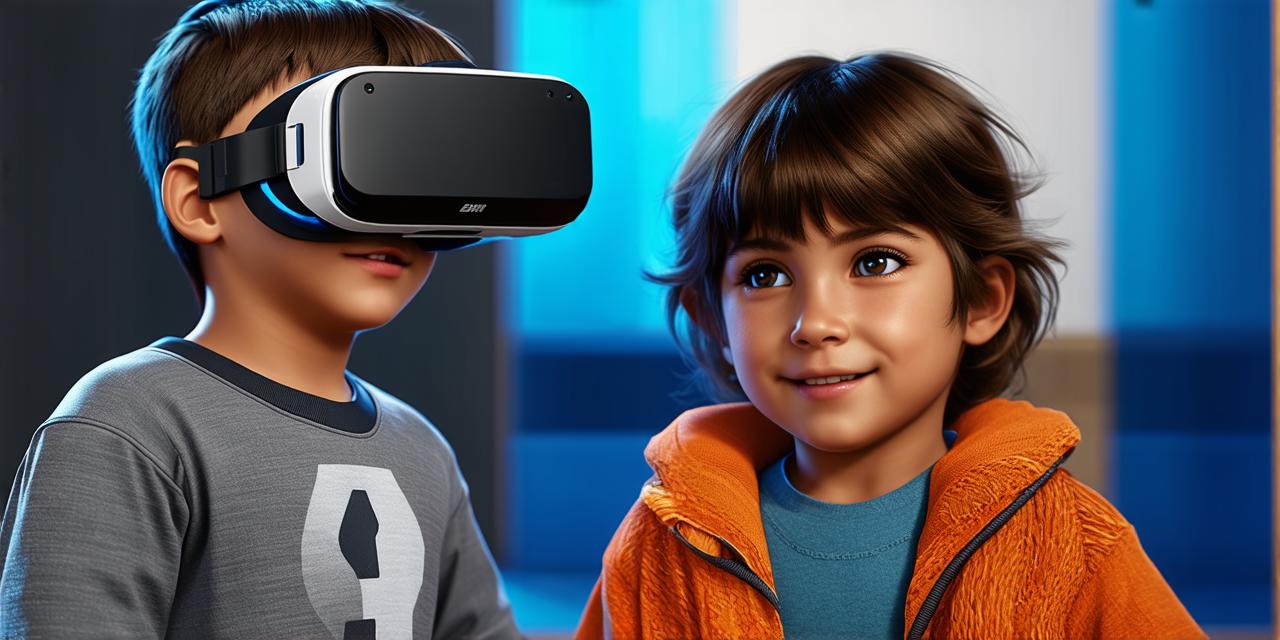Virtual reality (VR) technology has been around for decades, and it continues to advance rapidly. With the rise of VR devices such as headsets, handheld controllers, and motion chairs, more and more people are using VR for gaming, education, and entertainment.
Why is VR Not Recommended for Children Under 12?
Virtual reality technology can be very immersive and engaging, which can be both exciting and dangerous for young children. Here are some reasons why VR is not recommended for children under 12:
- Motion sickness: Young children’s brains are still developing, and they may not be able to process the rapid movements and changes in perspective that occur in VR environments. This can lead to motion sickness, which can be uncomfortable and even dangerous.
- Eye strain: VR devices require a lot of eye movement and concentration, which can cause eye strain and discomfort. Young children may not have the visual acuity or attention span necessary to use VR for extended periods.
- Violent content: Some VR games and experiences contain violent content that may be inappropriate for young children. This can desensitize them to violence and lead to aggressive behavior.
- Addiction: VR technology is highly addictive, and young children may become obsessed with using it, neglecting their real-life responsibilities and relationships.
- Safety risks: Children under 12 may not have the necessary hand-eye coordination or awareness to navigate a virtual environment safely. They may trip, bump into objects, or fall while using VR devices.
What Parents Can Do to Ensure Their Children’s Safety While Using VR
While VR technology can be very exciting and engaging, it is important for parents to take steps to ensure their children’s safety while using it. Here are some tips:
- Set age limits: Most VR devices have age ratings, which indicate the recommended age range for users. Parents should always follow these recommendations and make sure their children are not using VR devices that are too advanced or inappropriate for them.
- Monitor usage: Parents should monitor their children’s VR usage and set limits on how much time they spend using it. They should also be aware of the content their children are accessing and ensure that it is appropriate for their age and level of experience.
- Provide supervision: Children under 12 may need supervision while using VR devices to ensure that they are not putting themselves or others in danger. This may include holding onto a child’s hand while they use the device or standing nearby to monitor their behavior.
- Encourage real-life activities: Parents should encourage their children to engage in real-life activities such as playing outdoors, reading books, and spending time with friends and family. VR technology should be used in moderation and as part of a balanced lifestyle.
- Educate themselves: Parents should educate themselves about VR technology and its potential risks and benefits for their children. This can help them make informed decisions about whether to allow their children to use VR devices and how to use them safely.
Summary
Virtual reality technology has the potential to be a very engaging and educational tool for children, but it is important for parents to be aware of its potential risks and take steps to ensure their children’s safety while using it. By setting age limits, monitoring usage, providing supervision, encouraging real-life activities, and educating themselves, parents can help ensure that VR technology is used responsibly and safely by their children under 12.
